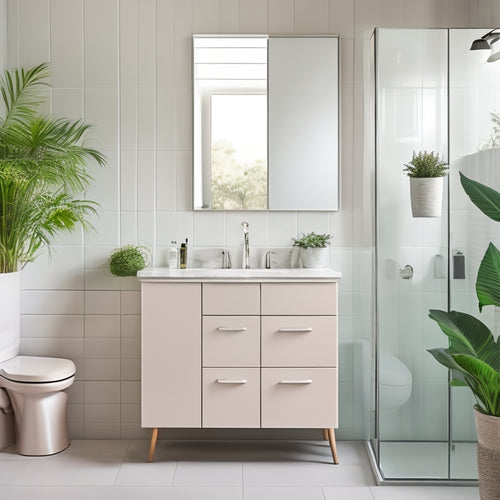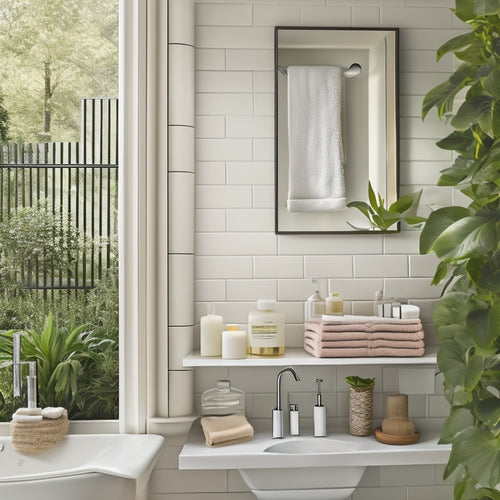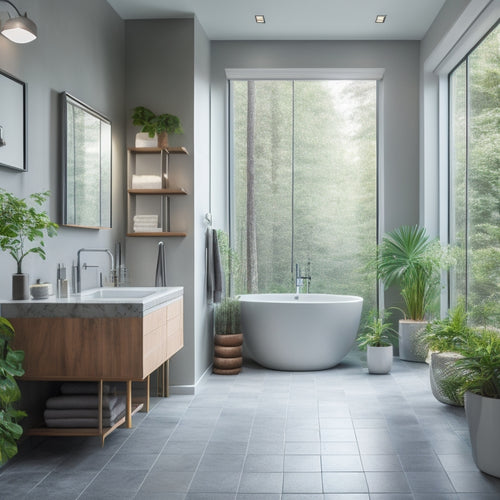
Revolutionizing Website Design: The Ultimate Guide
Share
I'm diving into the world of revolutionary website design, where a harmonious blend of aesthetics, functionality, and innovation converges to create breathtaking digital experiences. To craft a site that truly stands out, I'm mastering essential design elements like fonts, color schemes, and typography techniques that evoke emotional responses. I'm strategically combining typography, color, and visual hierarchy to create intuitive header and tab experiences. By building responsive column structures and designing engaging post elements, I'm ensuring a seamless user experience across all devices. Now, I'm ready to take it to the next level, and discover the cutting-edge secrets that will elevate my website to new heights.
Key Takeaways
• Mastering website design elements, including fonts, color schemes, and typography, is crucial for a cohesive look and user engagement.
• Strategic header and tab design guides users intuitively through website navigation, enhancing overall user experience.
• Building responsive column structures with borders, flexbox layouts, and grid systems ensures a robust and adaptable design.
• Engaging post elements, such as typography, imagery, and whitespace, work together to captivate readers and promote content flow.
• Optimizing website design for mobile devices is essential, prioritizing user experience, performance, and seamless adaptation to various screen sizes.
Mastering Website Design Elements
Designing a website that captures attention and conveys information efficiently requires mastering the essential elements, namely fonts, color schemes, and design components for body, header, tabs, columns, headings, widgets, posts, and comments.
As a web designer, I know that typography techniques play an important role in creating a cohesive look. I choose fonts that align with my brand's personality, and apply color psychology principles to evoke the desired emotional response.
To guarantee a seamless user experience, I prioritize accessibility standards, making sure my website is navigable for all users. By balancing aesthetics and functionality, I create a website that not only looks amazing but also provides an intuitive experience for visitors.
Crafting Header and Tab Experiences
By strategically combining typography, color, and visual hierarchy, I craft headers and tabs that not only capture attention but also intuitively guide users through my website's navigation.
I tailor navigation by creating distinct tabs with unique color schemes, font sizes, and hover effects. This enhances user experience by making it easy for users to find what they're looking for.
I also use contrasting colors for selected tabs and hover effects to create visual interest. Additionally, I guarantee consistent design for widgets within tabs, making it easy for users to navigate.
Building Responsive Column Structures
I frequently employ borders and faux columns to establish a visual structure that intuitively guides users through my website's content. This approach helps create a clear hierarchy of information, making it easier for users to navigate. To achieve this, I utilize flexbox layouts and grid systems, which provide a robust foundation for responsive design. By combining fluid containers with media queries, I can guarantee a smooth shift between different screen sizes.
| Column 1 | Column 2 | Column 3 |
|---|---|---|
| Header | Main Content | Sidebar |
| Navigation | Post Title | Widget |
| Hero Image | Post Body | Call-to-Action |
| Footer | Comments | Social Media |
Designing Engaging Post Elements
Crafting post elements that captivate users requires a thoughtful blend of typography, imagery, and whitespace. This blend enables me to create a harmonious visual flow that draws readers in. By selecting the right fonts, font sizes, and line spacing, I can improve readability and make my content more engaging.
I also consider the strategic use of images, carefully placing them within the post body to break up text and create visual interest. Additionally, I guarantee that whitespace is used effectively to create a clean and uncluttered design, enhancing the overall user experience.
Optimizing for Mobile Devices
With mobile devices dominating the way users access online content, I dive headfirst into optimizing my website's design for a seamless mobile experience.
Mobile compatibility is essential, and I guarantee that my site's responsive design adapts effortlessly to various screen sizes and devices. I prioritize user experience, streamlining the layout to minimize clutter and enhance performance optimization.
By fine-tuning elements like headers, tabs, and columns, I ensure a smooth and intuitive navigation. I also focus on optimizing images, adjusting margins, and refining typography to create a visually appealing and functional mobile interface.
Frequently Asked Questions
How Do I Ensure Website Design Consistency Across Different Browsers and Devices?
I maintain website design consistency by conducting thorough browser testing and implementing responsive design principles, ensuring a seamless user experience across devices and browsers through flexible grids, images, and media queries.
What Are the Best Practices for Designing Accessible Website Elements for Users With Disabilities?
Like exploring a familiar city, I design accessible website elements by ensuring Clear Navigation and using Accessible Icons, making it easy for users with disabilities to find their way, just as I found my way through Tokyo's Shibuya Crossing with tactile maps.
How Can I Effectively Use Micro-Interactions to Enhance User Experience on My Website?
I'm obsessed with crafting micro-interactions that wow! I use interactive buttons with subtle animations, tactile effects, and instant visual feedback to create an immersive experience, making users feel like they're shaping their own journey on my website.
What Are the Key Considerations for Designing a Website for Multiple Languages and Regions?
When designing for multiple languages and regions, I consider language switching mechanisms, regional personalization through tailored content, and culturally sensitive design elements, ensuring a seamless user experience across diverse linguistic and cultural landscapes.
How Do I Balance Website Design Aesthetics With Search Engine Optimization (Seo) Requirements?
When balancing website design aesthetics with SEO requirements, I prioritize content prioritization and create a clear visual hierarchy, ensuring that keywords are strategically placed while maintaining a visually appealing design that resonates with users.
Related Posts
-

Space-Saving Bathroom Storage With Slimline Cabinets
Slimline cabinets are your perfect solution for space-saving bathroom storage. They employ vertical space effectively...
-

Creative Open Shelving for Bathroom Displays
You're looking to change your bathroom into a serene oasis, and creative open shelving is the perfect way to showcase...
-

Revamp Your Bathroom Like a Pro
You're about to start on a journey to transform your outdated bathroom into a stunning oasis that exudes luxury and s...


